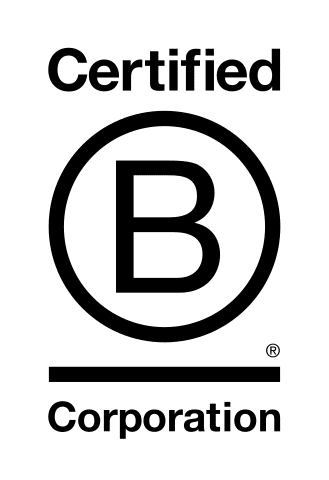
Sheenagh Gordon-Hart, Independent Director at The Director’s Office
‘Houston, we have a problem’. Now, I know that’s a misquote, but it came to mind when I began to pick up on the real-life manifestation of SFDR transparency requirements vis-à-vis annual reports. In Luxembourg we are in the middle of audit season for 2022 financial reporting (50% of the top 100 funds have December year ends), and boards are scrutinising the annual reports and preparing their own directors’ reports to investors.
At a recent board that I chaired, a colleague pointed out that each of the 100 sub-funds in one of the other SICAVs he serves requires an additional 17 pages of reporting, ie an additional 850 pages (assuming double-sided) to a report that last year already ran to 550 pages. Hence this year, that fund’s report will be 1400 pages long – and weigh in at 7 kg per copy. Such a hefty package is neither cheap to produce nor to send. I took a look at the costs of sending a 7 kg package within the UK and second-class postage would cost GBP 7 sent within the UK. Sending such packages abroad would cost much more, at least GBP 20 each to Hong Kong for example. Pity the poor postman – and the investor who must pay for it all. Add to this the carbon footprint of physical mail – how you may ask? The result of my enquiry came as a huge shock: on the website that offers carbon offset services, www.8billiontrees.com, a 7 kg package sent internationally generates a carbon footprint of 71 kg! I then tried to establish what it would cost to offset 71 kg of carbon. This proved less than easy, even with the help of Google. One Google answer was USD 3.50 per kg, another USD 2.50 for 140 kg!
For an idea of just how confusing the world of carbon footprint can be and the scale of differences in cost https://www.kiplinger.com/article/spending/t050-c000-s002-carbon-offsets-will-only-carry-you-so-far.html provides a quick read for those of you who are interested. Whichever end of the scale reflects reality, there is a cost and I doubt any boards are asking what the carbon emissions are related to the annual report, but they must be huge and are rising. So, I have to conclude that SFDR will add to the cost of achieving net zero, and itself result in more pollution. Of course, annual reports aren’t always mailed to shareholders but for the dinosaurs that prefer the printed word rather than the screen, the annual report will be a hefty tome and navigating it something of an increasing challenge. Turning to the boardroom, one question that I believe we need to consider is whether the annual report is the right place for this level of detailed reporting. The answer surely has to be no. In my honest opinion, fund groups should be able to provide a much leaner annual report disclosure on sustainability and clearly point to the sustainability section of their website for detailed information – and this should be the rule across the corporate world too (heavy hint to the Commission, Council and Parliament drawing up the detailed corporate sustainability disclosure requirements). While thinking about all this, I wondered about the carbon footprint of digital communications and to my horror found out that even email isn’t particularly climate friendly – apparently, according to www.eco2greetings.com, the average email emits 4 g of CO2, though it’s much less than the estimated 29 g emitted by a letter; adding a 1 megabyte attachment to an email leads to a CO2 emission of 19 g. In the example of the 100 sub-fund SICAV I referenced above, the annual report last year came in at almost 5 megabytes, meaning if it is emailed, its CO2 emissions would rise to around 100 g. Undoubtedly electronic delivery of fund documentation would be much cheaper in every way including carbon footprint, but ‘Nothing in life is free’ (credit Wayne Static).
Turning to other matters, Deloitte recently published its 2022 report on ‘Financial Reporting and Governance Practices’ of the top 100 Luxembourg funds which provides a useful review of trends in, in particular corporate reporting and transparency. The report is useful for benchmarking ones own entities and can be helpful in persuading sponsors of the value of adopting codes of corporate governance. For context, the funds comprising the top 100 have total net assets of USD 4.3 trillion, so one would expect such funds to be leading in high quality corporate governance. I believe it is important that reports such as these which are the bedrock of communicating with investors, should be easy to navigate and provide information that investors will find useful, and, dare I say, illuminating. It seems quite odd to me that disclosure of total expense ratios is not as common as I would expect: only 63% disclose TERs and around half of these are audited. I have no particular beef about whether or not such disclosures should be audited per se, but I think this particular disclosure is one of the most helpful to investors – quickly and easily digested and, hopefully comparable to other similar holdings. It is also strange to find that only 39% of the top 100 disclose adherence to a corporate governance code. The 2022 figure is higher than that noted for 2021, but given the increasing focus on governance matters, more boards should make it their business to do more than pay lip service. Alfi has a Code, refreshed in 2022, adherence to which Alfi recommends should be disclosed in annual reports. I have one new board that currently has not yet conducted a review to map adherence to the Code but the exercise is underway and should be completed in time for next year’s report with any reporting gaps identified and addressed. Interestingly adoption of corporate governance codes is much more common amongst Anglo-Saxon groups; in other words, most continental European managers do not adopt a code. Deloitte’s explanation is that local regulators in country of origin of the sponsor may not require code adoption, corporate governance practices are less well developed and that boards of continental European sponsored funds have fewer independent directors.
I mentioned that at this time of year, directors are preparing the directors’ report for inclusion in the annual report for their funds. Well, maybe. According to Deloitte, only 33% of annual reports include a directors’ report, even though Alfi provides a template that can easily be followed. It doesn’t take a huge amount of effort to document the number of board meetings held during the year, to highlight prospectus changes, and potentially to mention key aspects of the investment managers report that the board wishes to highlight. In my view, providing such a report allows the board to reassure investors that they are mindful of their responsibilities and that they are there to safeguard investors’ interests. The study also covers diversity and I know you’d love me to wax lyrical on that: perhaps in the next letter.




